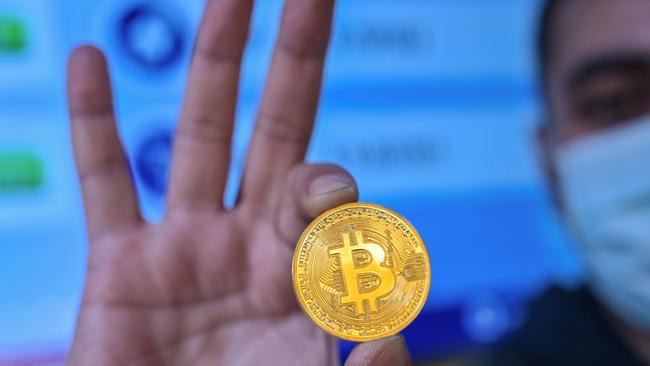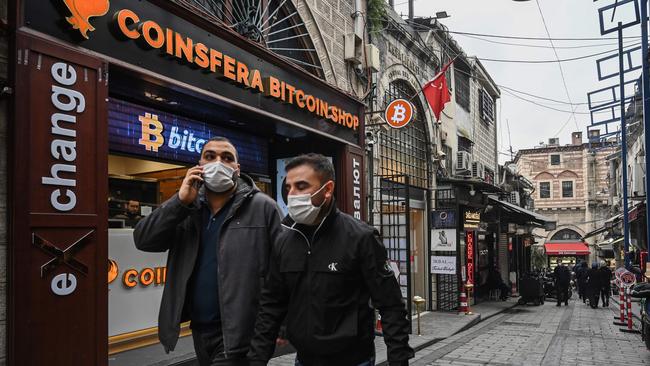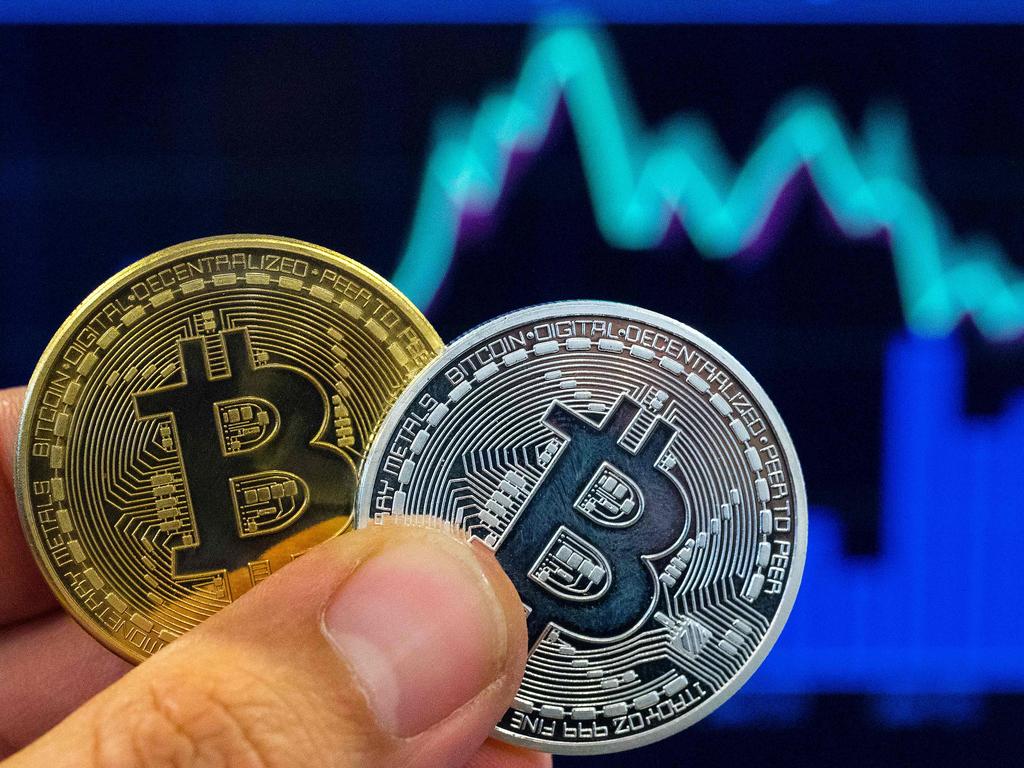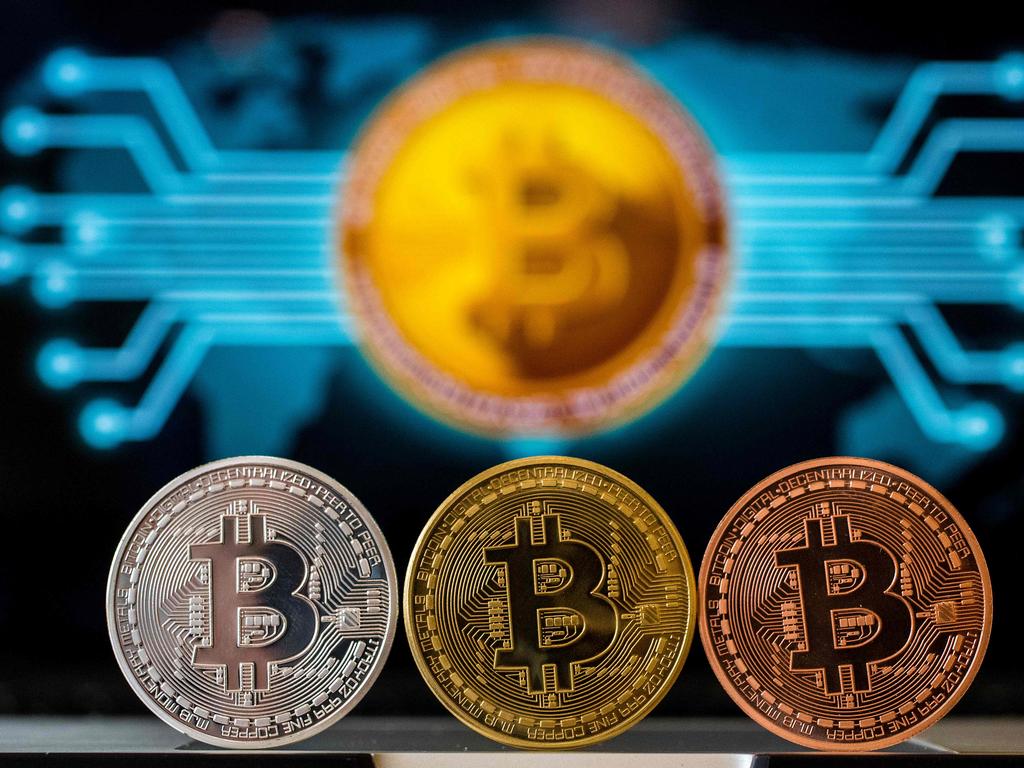Cryptocurrencies like Bitcoin are ready to go mainstream

Policymakers said they would regulate cryptocurrencies out of existence if they threatened to become anything more than a niche payment tool. Crypto was tainted as the currency of the dark web, used by drug dealers, people traffickers, fraudsters, and for ransom in North Korean cyberattacks. The fanatics retreated to the shadows and bitcoin settled at between $US5000 and $US10,000. Until August, when it exploded again.
Last week, bitcoin breached $US20,000 ($26,234) for the first time. For all the mainstream scepticism, something shifted during the 2017 crypto bubble. The closer financiers looked at bitcoin and other digital currencies, the more they saw a genuinely new asset class. It was not purely speculative like Dutch tulips in the fever of 1636. Nor was it purely a means of exchange. It was both, and, above all, a store of value. Bitcoin is finite, you see. The source code released in 2008 by Satoshi Nakamoto, its elusive parent, stipulates that no more than 21 million can be “mined”. Of those, 18.5 million have been. For the new believers, what Satoshi created was digital gold. Only better, because it has more uses.
The bubble this time is not being driven by wealthy Chinese citizens getting round Beijing’s capital controls to diversify their savings into condominiums in Vancouver. It is being driven by mainstream investors. No one demonstrates the shift more clearly than Wall Street’s alpha male himself, Jamie Dimon, chief executive of JPMorgan. In 2017, he threatened to fire any employee trading bitcoin on their own account for being “stupid”. Crypto was a “fraud”, he said, “worse than tulip bulbs”.
Today, JP Morgan is providing banking services to Gemini and Coinbase, two of the main cryptocurrency exchanges that until recently were considered toxic due to the market’s opacity. This month, JPMorgan strategists predicted that the gold price could suffer as investors switch to bitcoin. A few days earlier, Standard Chartered and Northern Trust became the first mainstream financial firms to offer “institutional grade” crypto custody services. Which means they will hold and insure bitcoin for institutions, just as they would a share portfolio, the contents of a safety deposit box or gold bars.

Banks are not leading the way on crypto, they are responding to clients. Some of the hedge fund world’s most illustrious names are moving into bitcoin, including Stanley Druckenmiller who made a fortune betting against the pound alongside George Soros on Black Wednesday in 1992, and Paul Tudor Jones, who is committing 1 to 2 per cent of his portfolio to the digital currency. Renaissance Technologies, the world’s second-largest hedge fund, is trading bitcoin futures. Microstrategy, a listed US business intelligence company, has put $US500m of bitcoin on its balance sheet as a regular asset.
All of those developments have occurred this year. Driving them, indirectly, is the pandemic. To understand why, you need to return to the fact that the number of bitcoins is finite. The closer “miners” get to 21 million, the longer it takes to create each coin. Compare that with what central banks have done this year. In a matter of months, they printed trillions of dollars. In Britain, the Bank of England printed pounds worth one-fifth of GDP.
Like sterling, bitcoin is a fiat currency, meaning it has no intrinsic value and its price moves with the market. Unlike sterling, though, it cannot be debased by policy. For that reason, Druckenmiller, Tudor Jones, Microstrategy’s chief executive Michael Saylor and countless others see bitcoin as a store of value.
Crypto fanatics believe digital coins have more to offer than being a digital proxy for gold. They think of them as Bill Gates thought of the internet in 1995, when David Letterman mocked the future world’s richest man for his geeky interest in audio streaming and email as they offered nothing more than radio and the post. Believers see bitcoin as a new technology that has yet to find its use case, just as cars were little more than curiosities in the age of the horse and cart before roads and petrol stations revealed their potential.
The missing piece is a formal crypto exchange, one that is deep, liquid, transparent and trustworthy. When Saylor was buying bitcoin at Microstrategy, he described the market data and infrastructure as “garbage”. He could not buy more than $US30m a day, in a market now worth $US38bn, without shifting the price, he said. For crypto to take the next step it needs an institutional market for price origination, discovery and trading.
Campbell Adams, a former FX trader who in 2013 developed an exchange that blocked speed traders, is close to launching the first mainstream crypto exchange platform with two top investment banks offering custody services, prime brokerage and leverage. All the standard banking rules on anti-money laundering and “know your customer” will apply, making the over-the-counter market more transparent than anything currently available. Cryptocurrencies like bitcoin, “stablecoins” like Facebook’s Libra and central bank digital currencies are likely to be traded.
Two years ago, I compared bitcoin and crypto to the wild west. It’s still wild but its evolution has been swift and 2021 could be a breakthrough year. Libra, now that Facebook’s ambitions have been scaled back, is due to launch as early as January, promising cheaper remittance services for migrant workers sending money home. China has trialled digital quantitative easing, creating money and sticking it directly into households’ e-wallets. The Bank of England is developing its own digital currency and Rishi Sunak wants Britain to be “leading the global conversation on new technologies like stablecoins and central bank digital currencies”. The wild west may be about to go mainstream.
Philip Aldrick is economics editor of The Times.







Bitcoin is back. Having smashed its way to $US19,300 in 2017, a thirteen-fold rise in just six months, the original digital currency crashed to $US3000 by the middle of the following year. The mania appeared to have passed.